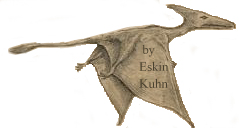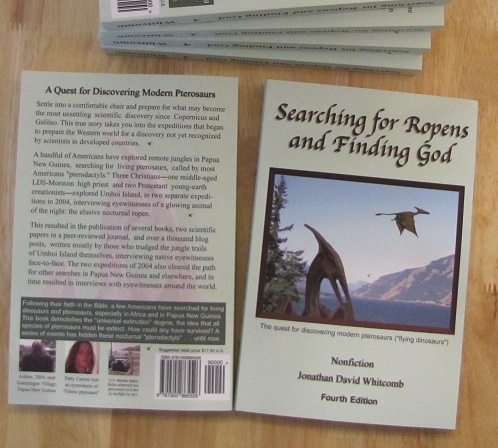By Jonathan Whitcomb
On the live-stream chat of the video “Youtube Pterodactyl Videos Success” (Youtube channel Protect Animal Life), on May 21, 2021, the American eyewitness Nicole Stanziale told of her sighting. Here is part of what she said:
I am 44 now. I live in South Carolina about 10 min away from Charlotte, North Carolina. When I was a senior in high school in 1993, my friend and I were driving down a dark road, in Fort Mill, S.C. . . .
. . . it was all wooded then, no houses or anything, just trees as far as you could see on both sides of the road . . . A huge black bird was flying ahead. It looked really big, but as it got closer I realized that this thing was massive! . . .
It swooped down. I was so scared it looked like it was going to crash into the windshield, but it didn’t. . . . I will never forget its face and eyes. Long face and beak, horn shape on the top of its head, a bit of a boxy horn, but a horn, a very long tail. The tail did have a shape at the end . . .
I had longer to look at the head and wings as it was headed strait towards the windshield. It did not have feathers. It was slick, like a bat. I would describe the wings and legs like a bats wings and legs.. but it was MUCH BIGGER! It glided. I actually never saw its wings flap.

The S.C. creature may be related to the above
###
.
Pterosaur Sightings in South Carolina
Youtube video on the channel Protect Animal Life
.
For many years, researchers have seen indirect evidence suggesting some modern pterosaurs feed on bats, at least as a part of their diet. Now we have direct eyewitness testimony that at least two apparent pterodactyls were chasing a bat at night in northern Alabama, in the spring of 2020.
.
The Strawman Argument with Worldwide Ropens
In a hypercritical Youtube video, a man attacks the idea that the ropen is a real animal, even potentially a modern pterosaur.
.
Are Modern Pterosaurs Dangerous?
The following is not a first-hand account but from a native who contacted me by emails in 2010, and he got the story from the grandson of the native fisherman who died three days after being attacked by a kor. I believe this animal is at least related to the ropen, if it is not the same exact species.
.
. . . and it was flying north. It was huge, as big as a plane, and looked very similar to the sketch created by Susan Wooten on your website. . . . I saw a huge pterodactyl looking creature, flying very high in the sky. The strangest thing about the sighting was how slow the wings were flapping and how high it was flying.
.





